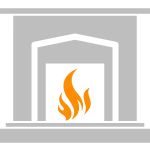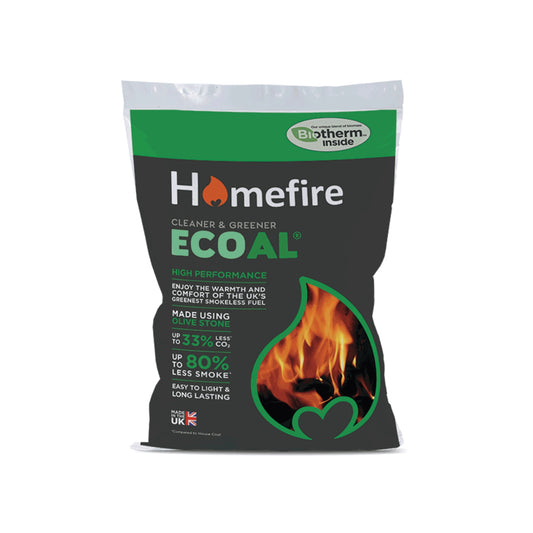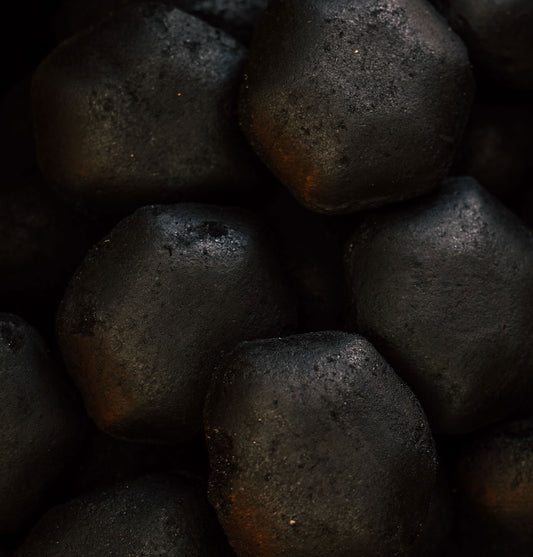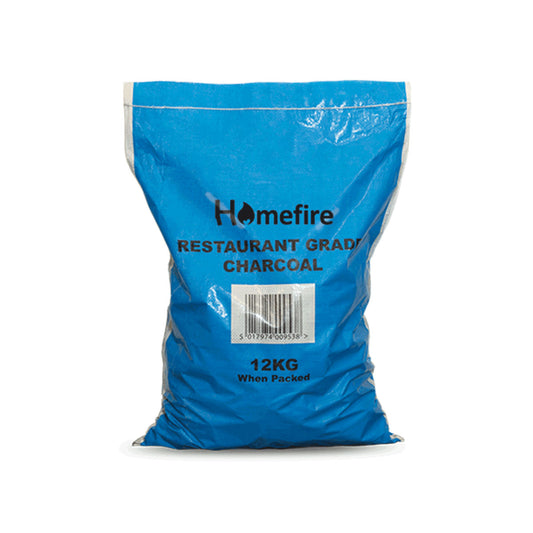
How To Stay Safe From Carbon Monoxide
Carbon Monoxide (CO) is a poisonous gas which is given off when burning solid fuel. CO gas normally passes harmlessly out of the top of the chimney. However, if the chimney is blocked or leaky, the appliance is faulty, or if the ventilation is inadequate, Carbon Monoxide could enter your home.
Safety Tips
- Ensure that your chimney is swept regularly
- Ensure that the fire has adequate ventilation at all times
- Use only HETAS registered installers for fitting solid fuel appliances
- Fit an audible Carbon Monoxide alarm in your property
- Don't cover or block outside vents, and check that overgrown plants aren't covering them either
- Have a central heating systems and gas appliances inspected yearly for leakages or damage
- Never leave a fuel burning appliance running in a garage, especially in a garage which is attached to a house
Related Products
Ecoal Smokeless Coal
Homefire Restaurant Grade Lumpwood Charcoal - 12kg
How To Stay Safe From Carbon Monoxide
The Dangers of Carbon Monoxide
Carbon Monoxide (CO) is a poisonous gas which is given off when burning solid fuel. CO gas normally passes harmlessly out of the top of the chimney. However, if the chimney is blocked or leaky, the appliance is faulty, or if the ventilation is inadequate, Carbon Monoxide could enter your home. It can also come from faulty central heating systems, or gas appliances such as electric fires and cookers, so it isn't only solid fuel burners who should be on their guard.
Symptoms of Carbon Monoxide Poisoning
You can’t see it, taste it or smell it, but CO gas can kill quickly, and without warning. Always remember the 6 warning symptoms of carbon monoxide poisoning:
Headache
Dizziness
Nausea
Breathlessness
Collapse
Loss of consciousness
If you suspect carbon monoxide poisoning.
Get fresh air immediately. Open the doors and windows, turn off gas appliances and leave the house.
Seek immediate medical attention. CO poisoning can usually be detected by a blood or breath test.
Have your home checked thoroughly before you return and if you think there is a major problem or gas leak, call the Gas Emergency Helpline on 0800 111 999.
Protect against Carbon Monoxide Poisoning
We recommend that you take the following steps to remove the risk to yourself and your family:
Ensure that your chimney is swept regularly.
Ensure that the fire has adequate ventilation at all times.
Use only HETAS registered installers for fitting solid fuel appliances.
Fit an audible Carbon Monoxide alarm in your property.
Don't cover or block outside vents, and check that overgrown plants aren't covering them either.
Have central heating systems and gas appliances inspected yearly for leakages or damage.
Never leave a fuel burning appliance running in a garage, especially in a garage which is attached to a house.
Barbecue Carbon Monoxide
It's also wise to take precautions to protect against carbon monoxide poisoning when using a barbecue. Although the risk is not as high as with a fireplace, it is still a risk not worth taking.
Be aware of wind direction when positioning the barbecue. The smoke should not be able to blow directly in to peoples faces, or through doors or windows.
Close doors or windows nearby to the barbecue to avoid smoke filling your house.
Avoid sitting or standing directly in the path of smoke.
For further information on Carbon Monoxide, visit www.gassaferegister.co.uk or speak to your chimney sweep.





